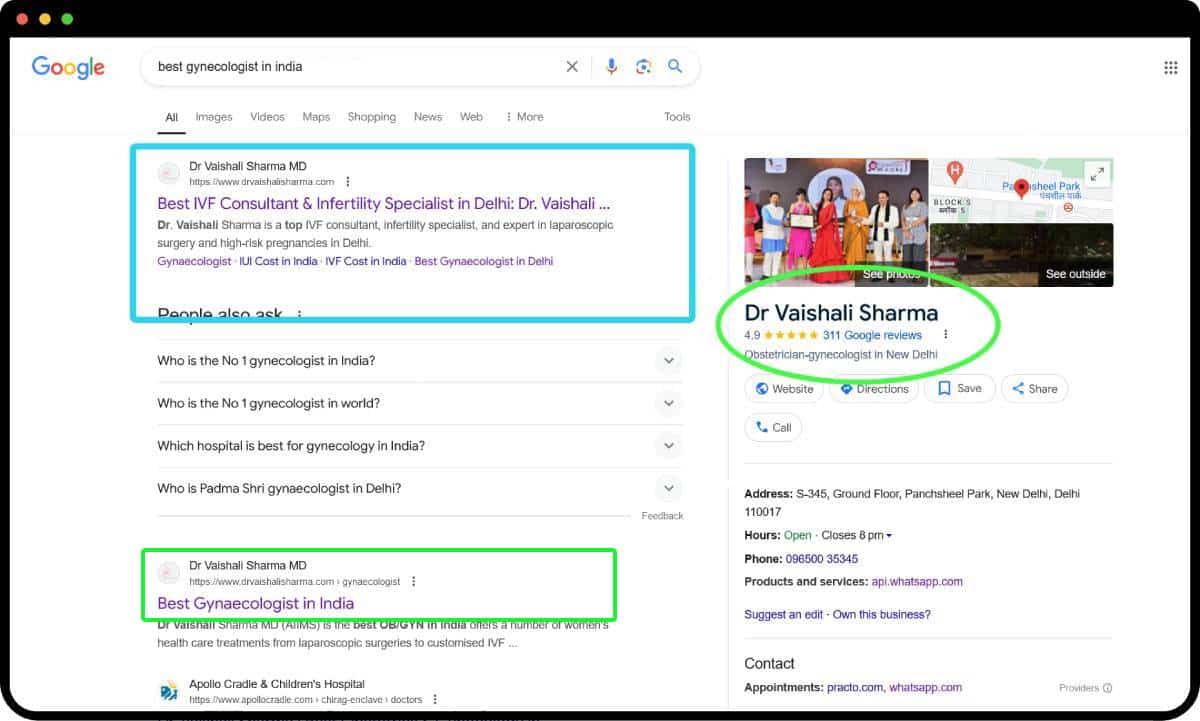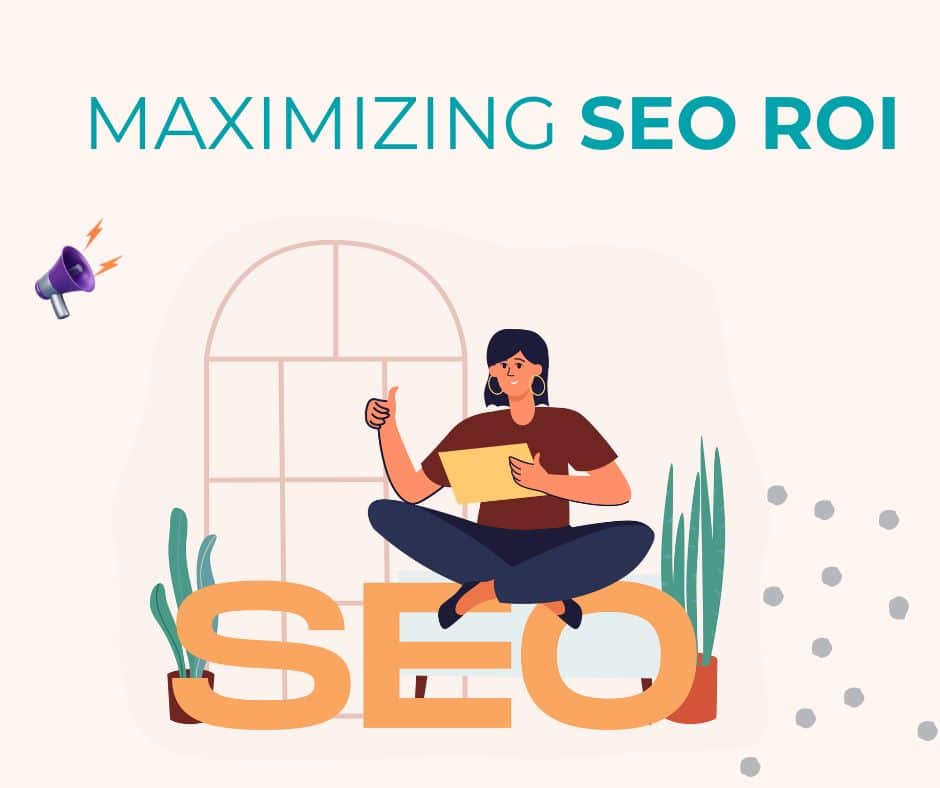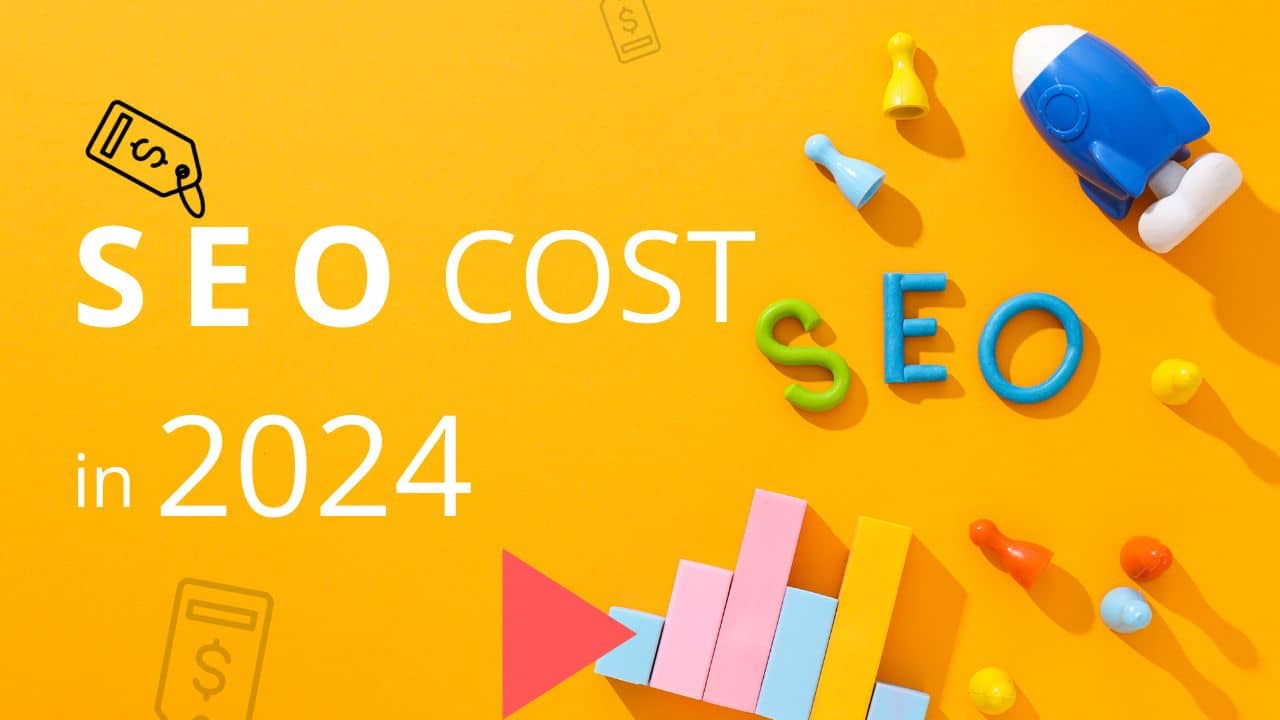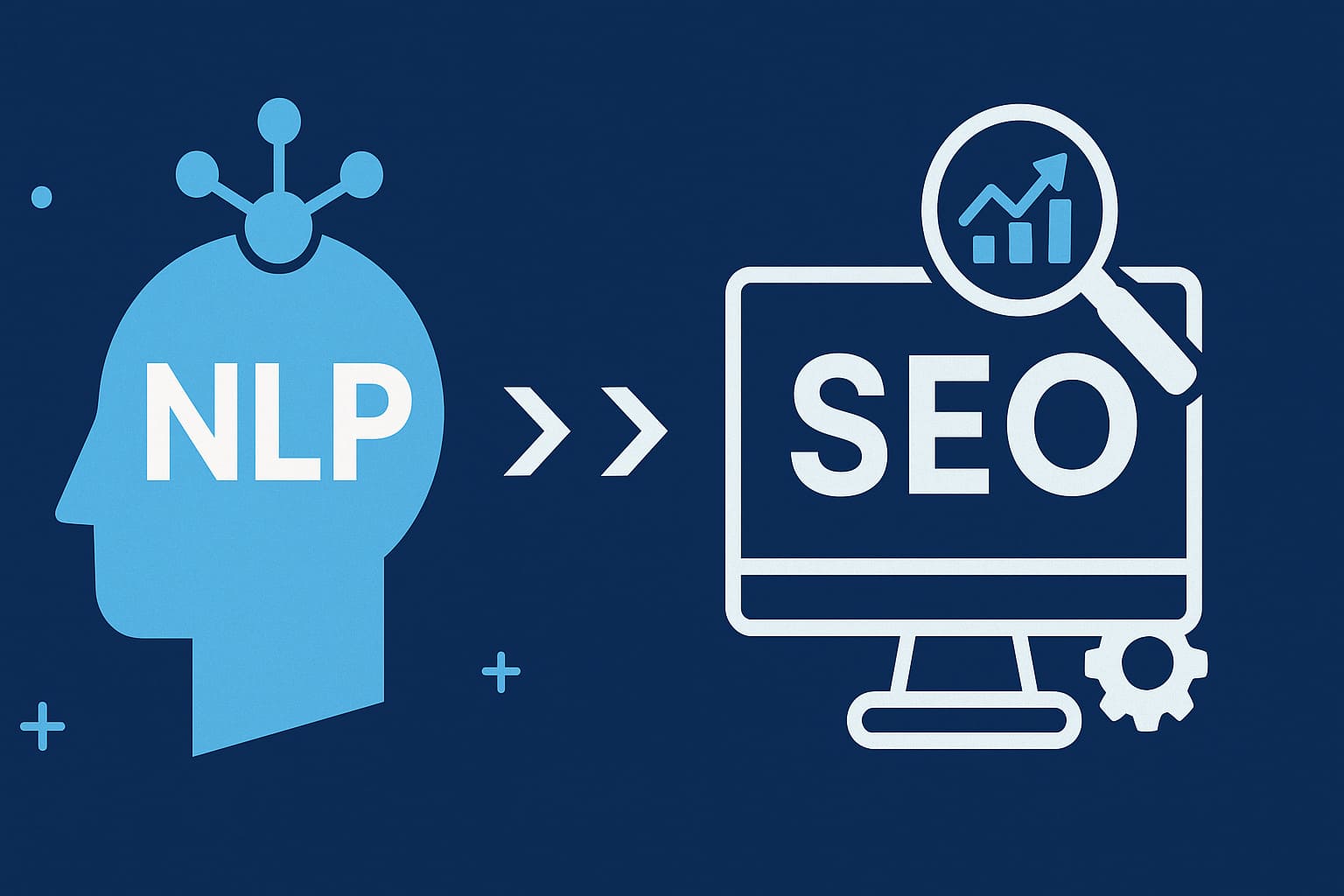In today’s hyper-competitive digital landscape, mastering Search Engine Optimization is no longer a choice. As we are in 2024, every business owner is dying to know, ‘How much does SEO really cost?
Regardless of project scope, provider expertise, or client business needs, there is no one-size-fits-all answer to the SEO question. But, whether you’re a small startup or a multinational company, understanding the different variables is essential.
Imagine the exclusive opportunity to significantly drive your online visibility and revenue through high-quality SEO services. With this knowledge, you can lay your expenses on a budget and work towards achieving your marketing and business objectives.
As we explore SEO costs in 2024, including diverse pricing models and what to anticipate across various services, to help you secure the best quality for your money. This handbook serves as an intricate guide to navigating the complex and highly polarizing business of getting an agency, freelancer, in-house, or full-service SEO team.
Basic Components of SEO Pricing
Basic Components that make up SEO Pricing are:
Scope of the Project
- Initial Audit: Current SEO performance analysis
- On-Page Optimization: to Optimize Keywords, Meta Tags and Content
- Off-Page Optimization: Link Building, social media and Outreach
Type of SEO Service
- Local SEO: Aims to access local search results.
- National SEO: Aims to have a wider audience within the country.
- E-commerce SEO: Focuses on online stores.
Expertise of the SEO Provider
- Freelancers: Cheaper, not always as well-rounded in terms of experience.
- SEO Agencies: Full range of services, more expensive than hiring a freelancer)
- In-House Team: Gives you complete control but has low overhead costs.
Pricing Models
- Monthly Retainers: Monthly fixed sum.
- Project-Based Pricing: One-time fee based on Project
- Hourly Rates: Pay per hour.
- Performance-Based: Costs tied with results.
Enhance your SEO to the next level today!
Talk to Our SEO Experts for Free Consultation!
Changes in SEO Pricing Landscape by 2024
What SEO Pricing Landscape Will Look Like in 2024
1. Increased Demand for Specialized Skills
- AI & Machine Learning: Adding a set of customizable tools and algorithms to your database for analytical processing and automation.
- Voice Search Results: This will provide to the new trend of smart speakers and voice assisted searches.
- Video SEO- Along with the rise of video content consumption, focusing more on optimizing your videos.
2. Greater Emphasis on High-Quality Content
- Depth and originality of content: Greater costs related to the creation exceptional, longform content.
- Interactive Content – Spending on more engaging media formats, such as quizzes and polls and interactive infographics.
3. Enhanced Technical SEO Requirements
- Core Web Vitals: Prioritize metrics such as page load time, interactivity & visual stability.
- Mobile-First Indexing – Prioritizing mobile optimization because more than half of the users use search engines through phones.
4. Localized SEO Strategies
- Hyperlocal Targeting: Improved precision in targeting smaller geographies.
- Localized Content: You will be required to create custom content for the local audience.
5. Performance-Based Pricing Models
- ROI-Focused Pricing: Additional agencies moving away from performance-based models and offering a guarantee (e.g., delivered traffic, conversions).
- Flexible contracts: Shorter-term and trial-period basis to show value before longer-term commitments.
6. Use of Advanced Analytics
- Data-Driven Decisions: High investment tools and expertise for analyzing will help them to improve these for leading to SEO strategies.
- Predictive: Assigning data such that future trends may be foreseen, forecasting by employing pattern matching techniques etc.
Common Misconceptions About SEO Costs
Misconceptions Around SEO Costs that flow around are:
1. SEO is Cheap
SEO is a large-time-investment proposition in terms of expertise, or people, tools and time.
2. One-Time Expense:
SEO is not a one-time fix thing, rather it is a long ongoing process.
3. Immediate Results:
SEO is a slow process and demanding quicker results might disappoint you.
4. All SEO Providers Are Equal:
The type and quality of SEO services varies. Cheaper options may not deliver the best results.
5. Spending more equals better results.
Spending more does not always equate to greater SEO success; it should be done with a plan for long-term investment in mind.

Average SEO Costs by Business Size
Typical SEO Budgets for Small Businesses
| Service Type | Details | Price Range |
|---|---|---|
| Monthly Retainers | Low End | $500 – $1,500/month |
| Monthly Retainers | Mid-Range | $1,500 – $3,000/month |
| Monthly Retainers | High End | $3,000 or more/month |
| Project-Based Pricing | Initial Audit | $500 – $2,000 (one-time) |
| Project-Based Pricing | On-Page Optimization | $1,000 – $5,000 (one-time) |
| Project-Based Pricing | Content Creation | $500 – $2,000 or up to $3,000 per project |
| Hourly Rates | Consultations | $50 – $150 per hour |
| Hourly Rates | Technical Fixes | $75 – $200 per hour |
Performance-Based Pricing: It depends on the particular case in most cases, there is a basic fee plus additional monetary rewards tied to the results.
These budgets give a range that small businesses can use while setting their SEO budgets, thus they will be able to select services that they can afford as they try to achieve their objectives.
SEO Spending for Medium-Sized Businesses
| Service Type | Details | Price Range |
|---|---|---|
| Monthly Retainers | Low End | $2,000 to $5,000/month |
| Monthly Retainers | Mid-Range | $5,000 to $10,000/month |
| Monthly Retainers | High End | More than $10,000/month |
| Project-Based Pricing | Initial Audit | $1,000 to $5,000 (one-time) |
| Project-Based Pricing | On-Page Optimization | $3,000 to $10,000 (one-time) |
| Project-Based Pricing | Content Creation | $1,000 to $7,000 per project |
| Hourly Rates | Consultations | $100 to $250 per hour |
| Hourly Rates | Technical Fixes | $150 to $300 per hour |
Performance-Based Pricing: Based on client needs and oriented to goals set by the client as well as the results provided by the latter.
Small business tends to use lower amounts of money for SEO than medium and large sized businesses, meaning that more extensive tactics can be applied and greater positioning achieved in the respective markets.
Expected SEO Costs for Large Enterprises
| Service Type | Details | Price Range |
|---|---|---|
| Monthly Retainers | Low End | Up to $100 to $200 thousand per month |
| Monthly Retainers | Mid-Range | $20,000 – $50,000 a month |
| Monthly Retainers | High End | Over $50,000 for one time |
| Project-Based Pricing | Initial Audit | $5,000 – $20,000 (one-time) |
| Project-Based Pricing | On-Page Optimization | $10,000 – $50,000 (one-time) |
| Project-Based Pricing | Content Creation | $5,000 – $30,000 per project |
| Hourly Rates | Consultations | $150 – $300 an hour |
| Hourly Rates | Technical Fixes | $200 – $400 per hour |
Performance-Based Pricing: Depending on the specific KPI and the agreed performance indicators.
Large organizations prefer to spend more money than smaller organizations in SEO for competitiveness, increasing market share, and increasing the organization’s visibility on the internet across regions and products.
Effective Allocation of SEO Budgets
| Service Type | Price Range |
|---|---|
| Initial Audit and Strategy | $1,000 – $5,000 per project |
| On-Page Optimization | $3,000 – $10,000 per project |
| Content Creation | $1,000 – $7,000 per project |
| Off-Page SEO (Link Building) | $2,000 – $8,000 per project |
| Technical SEO | $1,000 – $5,000 per project |
| Ongoing Monitoring and Optimization | $2,000 – $10,000 per month |
Use the money wisely to target these areas and get the best value and Seo results that will make your business prosper in the long run.

Comparison of Monthly Retainers and Project-Based Pricing
Monthly Retainers
- Description: Customers pay a fixed amount each month for the required services.
- Advantages: Consistent effort, predictable cost, flexibility in changing strategy.
- Suitable for: Companies interested in effective and long-term results.
Project-Based Pricing
- Description: The client pays a one-time fee for the required SEO services.
- Advantages: Clear scope, cost-effective for specific needs, choice of service.
- Suitable for: Advanced programs or projects with pre-defined SEO requirements with limited budget.
Summary
- Monthly Retainers: Offers flexibility and regular improvement.
- Project-Based Pricing: Offers properly described scope and is cost-effective for responsibilities or restrained budgets.
Prevalence of Performance-Based Pricing in SEO
Performance-based pricing in SEO, a phenomenon where costs are based on specific outcomes such as better rankings and more traffic, is still relatively rare. This model can be hard because of:
- Complexity: SEO can be challenging to measure and attribute back to specific actions taken.
- Risk: Providers are afraid of the unknown, and how search engine algorithms may change over time
- Trust: Establishing trust and align expectations between clients and providers can be a bit harder.
Although performance-based options exist through some providers, these are frequently added to base fees or require demonstrable metrics and benchmarks for expectations to be managed effectively. Also, more conventional SEO pricing models such as monthly retainers or project-based cost structures are still the preference of many companies.
Role of Hourly Rates in Modern SEO Pricing Structure
The hourly rate has become an important term in contemporary SEO pricing structures, enabling greater transparency and flexibility from both customers and providers:
- Consultations and Audits: SEO consultants are also available for hire by the hour, to help with audits or strategic planning.
- Ad-Hoc Services: Hourly rates are ideal for individual, project-based SEO services like technical cleanups, content upgrades or performance audits.
- Flexibility: In this model clients can keep a check on cost by paying for the time spent upon SEO activity as per his requirements and it is suitable for small business having variable needs or low budget.
A way for you to engage SEO services on an as-needed basis without having specific appear needs or by working within a budget and complementing other pricing models such monthly retainers, per project based etc.
Enhance your SEO to the next level today!
Talk to Our SEO Experts for Free Consultation!
Factors Influencing SEO Costs
Key Factors Driving the Cost of SEO Services
- Services Range: The broader and more detailed your efforts, the more they will cost you.
- Business Size and Goals: More investment is towards the bigger one’s goals for competitive markets.
- Expertise and Experience: It helps the service providers who have some special skill or experience to charge higher.
- Market Competition: Adopting Aggressive Strategies in Competitive Industries.
- Geographical targeting: Local SEO costs less than the national or global campaigns.
- Tools and Technology: The advanced tools raise costs. Custom Content Creation: This is an area where the high quality of content production makes a big difference in the budgets.
Impact of Website Complexity on SEO Pricing
- Technical Issues: More time and proficiency needed.
- Customization Required: There are special needs which would require specific skills and tools.
- Content Volume: Extensive content requires in-depth optimization.
- Integration Issues: Additional cost for integrating systems and tools.
- Ongoing Maintenance: Continuous monitoring and updates increase costs.
Website complexity can significantly drive-up SEO pricing, requiring businesses to plan and budget accordingly.
Role of Industry Competition in Determining SEO Costs
- More Efforts: Need focused and sustained SEO work in high competition areas.
- High Level Approaches: To beat the competition, going extra mile will be a necessary thing that would require superior strategies and resources.
- Good Content: The various barriers to entry related, to generating and editing best-in-class content will make competitor less.
- Link Building: To implement a link-building campaign effectively we need more cash.
Influence of Geographic Location and Market Size on SEO Expenses
- Local vs. National/Global:
Local SEO is cheaper and more targeted. National/Global SEO: They are more expensive than Local due to reach, and competition. - Market Size:
More competition, more resources, the bigger the market is, the large number of investments that will have to be made for a business to compete. - Location-Specific Costs:
SEO pricing is regional, and typically costs more in bigger cities. - Localized Content and Links:
Costs can go high for creating local-specific content and backlinks.
Specific Goals and Needs of the SEO Campaign
- Increase Organic Traffic: Focus on keywords and content.
- Improve Search Rankings: Focus on ideas in relation to the keywords.
- Enhance Local Visibility: Emphasis on the basic SEO strategies.
- Boost Online Sales: Maximize product low-level features and user’s perceived value.
- Build Brand Awareness: Content marketing and link building must be used.
- Technical SEO Improvements: Increase site speed, responsiveness as well as crawlability of the website.
- Competitor Analysis: Exploit opportunities that are available in the weaknesses of the competitors.
- Content Strategy Development: Of specific concern is the preference towards items coherent with SEO goals and areas of interest for the target audience.
Influencing Factors
SEO pricing is influenced by:
- Scope of Services: More extensive initiatives demand more money.
- Business Size and Goals: As we aim higher, the strategies that are needed should be more comprehensive.
- Expertise: The degree of specialization increases costs.
- Market Competition: Note that the competitive industries require much more assertive strategies.
- Geographic Location: The fees charged differ with the areas that probably are cheaper when one is from the rural areas to the urban ones.
- Website Complexity: The strategy also has specific effects depending on the complexity of the sites.
- Campaign Goals: When SEO is adapted to certain goals, strategies, and expenses change.
ROI from SEO Investments
Average ROI Expected from SEO in 2024
It becomes a fairly difficult task to predict in rough what the average ROI of SEO is going to be in 2024 since the competitive niches are not the same as non-competitive niches and the tactics as well.
Employing the growth hacker industry and the information acquired it is evident that the proper application of SEO campaigns has the capability of producing 100-500% profits or even more depending on factors such as:
- Industry Competitive Pressure: Industries with high competition leads to organizations experiencing a better return in cases of SEO ranking.
- Conversion Rates: The only factors which have been affected by this change are the organic traffic and conversion rates which have a direct effect on the ROI.
- Long-term Benefits: SEO can rise higher and higher over the increment of time and can deliver a regular result with a good Return on Investment.
However, to enhance the performance of SEO in the future, it is vital for companies to go to the next level. To ensure that SEO marker complies with the marketing and business goals to achieve maximum marketing ROI in the year 2024 and more.
Measuring the Success of SEO Efforts
- Organic Traffic: Track increase in number of visits on search engines.
- Keyword Rankings: Monitors changes in search engine rankings.
- Conversion Rates: Monitor the actions taken after organic search visits.
- Click-Through Rate (CTR): Analyse the percentage of clicks from search results.
- Bounce Rate: Audit the percentage of visitors with no interaction on site.
- Backlink Profile: Evaluate the quality and quantity of backlinks.
- ROI: Calculate the ROI from the SEO activities.
- Engagement Metrics: Assess session data and user interaction.
- Technical SEO Audits: Check and ensure the health and performance of the site.
Critical Metrics for Assessing SEO Performance
You can consider the below-mentioned important metrics to evaluate SEO Performance:
- Organic Traffic: It evaluates the number of visitors visiting from search engines.
- Keywords Ranking: Allows you to monitor where targeted keywords rank on search engines.
- Conversion Rates: Measures the percentage of site visitors who take desired actions (like purchases, sign-ups).
- Click-Through Rate (CTR): How many searchers clicked on your site’s link in the results.
- Bounce Rate: This one is a measure of how many people just saw the Home page and left your side.
- Backlink Profile: This section shows you the number and type of websites linking to your site.
- Page Load Time: Determines exactly how quickly your web pages load, affecting user experience and ranking.
- Engagement Metrics: This metric tracks the user’s engagement such as number of visits, pages per session etc.
- ROI: It is considered the return of your SEO from 2 main contexts i.e. Cost and Revenue.
Timeline for Seeing Returns from SEO Investments
It generally takes 9-12 months to get back the investment consistently to achieve sustainable results.
The timeline for seeing returns from SEO investments can be explained as:
Acquisition and Inventory Check (0–3 Months)
- Seo audit and technical changes
- Develop SEO strategy
Content creation and On–Page optimization (3 to 6 Months)
- Provide or create, and refine, elements
- Improve meta tags and link within the site
Off-Page SEO and Link Building (Off-Page >6-9 Months)
- Start link-building campaigns
- Increase the internet presence of the organization through engagement
Continued Optimization and Evaluation (9 – 12 Months)
- Monitor and refine the strategies implemented in the SEO process
- Implement technical enhancements
Significant ROI (12+ Months)
- Some of the impacts that have been observed are; increase in traffic and rankings, increase in conversions.
- Sustainable improvement to achieve a continuous growth rate

Choosing the Right SEO Service Provider
Criteria for Selecting an SEO Agency
When selecting an SEO agency, consider these key criteria, that is why, selecting the right SEO agency it is necessary to focus on the following factors:
- Experience and Expertise: The criterion that you should consider is the one relating to expertise in your area of operation and experience.
- Client Reviews and Testimonials: Scale the official site of the agency and try to read something about it or possibly just read a few of the clients’ testimonials.
- Transparency and Reporting: They should be ready to offer sufficient and timely information and update the working progress.
- Customized Strategies: Instead of requesting generalized equipment it is better to receive more specific equipment.
- Communication: There should be effective and proper ways to communicate with each other.
- Cost and ROI: It should allow the users to differentiate and to compare the price as well as to think and weigh over the possibility of a refund.
- Range of Services: Please discover to what extent these SEO services incorporate some of the attributes; especially the technical SEO; content writing and link building.
Enhance your SEO to the next level today!
Talk to Our SEO Experts for Free Consultation!
Impact of Freelancer vs. Agency on SEO Outcomes
Freelancer
Pros:
- Cost-Effective: Often, they cost less than employing agencies.
- Flexibility: The ones which can be more approachable to changes in the procedural conditions for cooperation and concrete clients’ requirements.
- Personal Attention: Opportunity for direct face to face communication and offering of personalized services.
Cons:
- Limited Resources: May not have the versatility of business and the resources of an agency.
- Availability: Something major that cannot be worked on if the owners are absent from work.
- Scalability: May be less suitable for very large projects or projects which require fast expansion.
Agency
Pros:
- Comprehensive Expertise: Availability of multiple groups of professionals.
- Resources: More analytical tools and advanced technologies.
- Reliability: No downtime and no stand-alone, independent constituent.
- Scalability: Able to manage big projects/escalate endeavors when called for.
Cons:
- Higher Cost: Costlier than independent freelancers.
- Less Personalization: Loss of individuality or the relative likelihood of the organization being just one among the numerous clients that an agency can attend to.
- Potential Bureaucracy: It is associated with slower abilities to adapt to changes because they have got complicated structures.
Signs of a Reliable and Effective SEO Provider
- Proven Track Record: As evidenced by the case studies and the testimonies of the clients.
- Transparency: Appropriate understanding of strategies and tactics is clear and speaking of detailed and precise reports.
- Ethical Practices: To make sure that they have implemented only the white hat SEO techniques into their SEO plan.
- Industry Knowledge: Business operations with focus on the line of business in which you are operating or area of concentration.
- Customized Strategies: You get new and individual SEO services based on specific needs of your enterprise.
- Strong Communication: Able to contact them and they have good communication and respond well.
- Up-to-Date Practices: Anticipated by the continuous information on which techniques of SEO in the present time are being employed or the new ones that have been designed and implemented by the search engines.
- Comprehensive Services: Specifically, it aims at the integration of building and its content creation as well as all the connecting phases starting with technical SEO.
Vetting Potential SEO Partners
Some of the strategies to use when searching for a proper SEO partner include:
- Research: It is useful to read client’s comments and reviews, to check the flow of successful completions they had.
- Experience: Concentrate on such hosts as professionals working in the sphere of your activity and those who have background experience in your sector.
- Approach: Ensure you check that they promote its ethical SEO services and specify an approach.
- Communication: Those include the assessment of the level of their response and their specifics concerning the way they communicate.
- Cost and ROI: Pricing should be carried out in relation to the likely organizational return on investment.
These steps help in making sure that one gets to sign the right SEO partner that will help in the delivery of the best results as required in the business.
Emerging Trends in SEO Pricing
New Trends Shaping SEO Costs in 2024
Here are some trends that might affect the SEO costs in the year 2024:
- Increased focus on quality content: Even though it is mostly based on keywords, with Google’s algorithms improving in terms of analyzing content relevance and usefulness, it will mean more focus and resources being put into creating high-value, authoritative content that meets the user’s need.
- Shift towards video and interactive formats: It is important to note that videos and other multimedia such as animated graphics, calculators, and quizzes are becoming popular.
- Voice search optimization: The use of voice results is becoming more common in search, especially on mobile. Voice search will become more important, requiring more conversational content which can be addressed to voice assistants, which will increase the price for some SEO services.
- More local and mobile optimization: Since just over 50% of all searches are made with mobile devices, while 61% are based on local intent, SEO methods will target location-based ranking factors and mobile-friendly web layouts.
- Greater emphasis on-page experience: Since these factors – mobile friendliness, safe browsing, HTTPS security, and page load speed are important to Google, organizations might need to spend more on tech solutions and web performance.
- Increased competition for clicks: That is because more and more companies realize the importance of appearing on the first page or two of the search engines’ results. Which may lead to an increase in ad spend for some SEO budgets.
Influence of AI on SEO Strategies and Pricing
AI is significantly influencing SEO strategies and pricing:
- Enhanced Insights: AI tools provide deep data analysis, improving keyword targeting and content optimization strategies.
- Automation: Tasks like content generation, A/B testing, and performance tracking are automated, reducing manual effort and costs.
- Personalization: AI helps customize user experiences, boosting engagement and conversion rates, impacting strategy effectiveness and pricing.
- Algorithm Updates: AI-driven algorithms emphasize relevance and user intent, shaping SEO tactics and pricing for adaptive strategies.
- Cost Efficiency: Despite initial investments, AI streamlines operations, potentially lowering long-term SEO service costs while enhancing results.
AI’s integration into SEO enhances efficiency, personalization, and effectiveness, albeit with considerations for initial investment and ongoing adaptation to evolving algorithms.
Impact of Voice Search on SEO Budgets
The impact of voice search on SEO budgets includes:
- Keyword Strategy: An impact on the process of keyword research and content creation for Q&A type and long-tailed keywords and potentially on the optimization costs.
- Content Optimization: It becomes shorter with the substance highlighted that it alters the content layout and SEO techniques, possibly raising the cost of manufacturing content.
- Technical SEO: Ensure that the websites remain interactive and handle the issue of loading time for voice search users. This defines the pattern of the website’s development as well as the subsequent maintenance cost.
- Local SEO: Even the latest shifts are aimed at using direct speech to a search engine more often in local inquiries, which means more spending on local SEO tools such as GMB and content developed for the purpose of targeting the local audience.
- Competition and ROI: This means that one must spend more time and possibly more money in SEO to gradually get the proper ROI in the positions concerning voice search since the competition for the few available positions is going to grow.
In any case, voice search increases the usage convenience when it comes to search but at the same time creates the need to adjust the SEO budget for the new conditions and opponents.

New Tools and Technologies Reducing SEO Costs
New tools and technologies are helping to reduce SEO costs by automating tasks, improving efficiency, and enhancing accuracy:
- AI-Powered Tools: Remove the keyword research and content optimization activities from the fully-auto processes to minimize the level of automation as much as possible.
- Content Generation Tools: It is also highly beneficial to generate such parts like GPT-4 since they are implying the usage of AI; the respective services are incredibly cheap.
- SEO Auditing Tools: Programs that can be obtained from the market including the Screaming Frog and SEMrush are well equipped to do the job in the shortest time possible consequently, eliminating cost entirely.
- Automation Platforms: There is software known as Zapier that helps integrate different SEO tools and the flow of processes and all these help in cutting costs of implicated labor.
- Analytics and Reporting Tools: Professional tools are internet based analytical tools and they give small information at the twinkle of an eye and do not take extra time to do it.
- Local SEO Tools: Some of the site crawlers which can help in facilitating the various procedures of local SEO are Moz Local and Bright Local; therefore, it is cheap to get the local listings and citations.
Most of these tools are time savers though they involve some sort of manual input, the velocities and the efficacy are raised hence general reduction in the cost to undertake SEO.
Integration of SEO with Other Digital Marketing Strategies
It is more effective to apply SEO together with other Internet promotion techniques to improve the outcomes in the management of the processes. Key integrations include:
- Content Marketing: SEO was incorporated with content marketing in a way that one could look back at how great, fresh and relevant content is created to help in the influx of the organic traffic alongside good conversion rates.
- Social Media Marketing: Utilize it also for promotion of other SEO contents and to enhance visitors to the site, and backlinks, enhancing the position of the site in the search engine, surveys and the brand image.
- Paid Search (PPC): SEO and PPC hence should be used together to be a search marketing strategy whereby data from PPC can be used on SEO and data from SEO be used on PPC.
- Email Marketing: Make sure that the SEO information is well integrated into the regions of email marketing with intention of targeting certain niches with the intention of noting the convergence of great interest towards the contents of the mails.
- User Experience (UX): Discuss how to better design and organize websites for SEO collaboration with UX design teams, where possibilities to enhance website speed, mobile-friendliness and, therefore, the free experience for users are defined.
- Analytics and Data Integration: Connect the SEO success factors with other website marketing fields to get an overall image about this activity and make the right decision.
This is because digital marketing gives a better reach of several forms of marketing, supports the collective maximum coverage, returns on investment and the synchronization of the various forms to the best angles of their potential.
Emerging Trends
AI and Automation
- Increased efficiency of data analysis in relation to SEO and automation of related duties.
- innovative methods such as the use of Artificial Intelligence in generation of content as well as control of performance which lowers costs.
Voice Search Optimization:
- Targeted on conversational search queries and long tail keywords.
- More attention to paid to mobile and local SEO.
User Experience (UX) Focus:
- Stress on the sites’ speed, mobile responsiveness, and accessibility.
- Increased spendings on technical aspects of SEO and, possibly, upgrades to website design.
Content Quality and E-A-T:
- Informativeness and credibility of the given context.
- E-A-T approaches that help rank potential competitors out of the top positions on the search engine results pages: expertise, authoritativeness, and trustworthiness.
Integration with Other Digital Marketing:
- Interaction with content marketing, publishing and social media, paid search, email marketing and usability teams.
- Application of Big Data to farther development of the integrated strategies and enhancement of the ROI.
Local SEO Importance:
- Increasing relevance of local SEO.
- More focused efforts in Google My Business posting and optimization as well as local citations.
Advanced Analytics and Reporting:
- In a fast-changing business environment, real-time information and quicker decisions.
- Auditing and analytics that will cover all the areas of the organization.
These trends show further development of SEO mindset and how it is important to encourage flexibility and interconnectedness of approaches and orient at the usage of high technologies.

Case Study Examples of SEO Budgeting
Real-World Examples of Effective SEO Budgeting
- Small Business Example: Budget some of your SEO campaigns to target certain areas so you can create and enhance your Google My Business listing and build local citations.
- E-commerce Example: Concentrate on keyword research for creating relevant original content for receiving better organic traffic and use PPC for quick results.
- Corporate Example: Consequently, ongoing SEO Audits with-times Technical SEO, updates and maximum efforts should be put in on the high-quality content creation to sustain the authority and competitive position.
These cases represent realistic scenarios of customized SEO budgeting strategies concerning business objectives and target markets to achieve the maximum value per cost.
Approaches to SEO Spending in Different Industries
Retail/E-commerce:
- Conduct on page SEO, focused on product page, and content marketing.
- Leverage on pay per click (PPC) for the products listing and marketing.
Healthcare:
- This is why it is recommended to focus on local SEO, gathering patients’ reviews, as well as creating authoritative content.
- Include expenditure for medical SEO specialists and regulation of the industry.
Technology:
- More focus should be on the technical aspect of SEO, updating the website with fresh content on trends regularly, and backlinking.
- Pay for SEO tools to track the competitor as well as the tech keywords.
Hospitality:
- Improve local SEO targeting down to hotel places, users’ reviews, and integrated booking systems.
- Budget money for maintaining a company’s reputation and getting listed in the local directories.
Financial Services:
- E-A-T is an important concept to draw the user’s trust by focusing on it and by implementing SEO changes relevant to financial content and having secure site features.
- Seek SEO compliance and financial content marketing ideas as a way of making the company website rank higher.
Every industry involves factors that must be considered concerning SEO expenses; factors such as locality, legal standards, niche, and users’ confidence.
Impact of Economic Downturns on SEO Budgets
During economic downturns, the impact on SEO budgets includes:
- Budget Constraints: Marketers may cut down the total marketing expenditure which will impact the SEO expenditure.
- Focus on ROI: Focusing more on marketing budgets, SEO has had to justify the efficiency and effectiveness of its investments.
- Shift in Priorities: The body shows preference of cheaper methods like the organic SEO over the paid advertising.
- Competitive Pressure: Increased competition for the ever-reducing strict consumer dollar spending, thus the need for a more effective SEO technique.
- Adaptability: Lack of permanent strategies in SEO that can accommodate consumers’ short- and long-term buying habits and dynamics of the marketplace.
Another essential aspect which should be taken into consideration is the strong focus on efficient budgeting in terms of SEO since a business operates and must respond to an economic crisis.
Navigating SEO Costs for Niche Markets
Tailoring SEO Costs for Niche Markets
- Focused Keyword Strategy: It is better to provide some extra money for micro level keyword research more oriented to the target audience purpose and search.
- Content Customization: Target on delivering to the market unique, memorable, special and relevant offers that solves a specific problem.
- Targeted Local SEO: It can be also targeted at narrower demographics for countries, but it will take up more of the conversion rate.
- Specialized Outreach: In this case you just must invest time and capital on the marketing of the website to that market or the professionals in that given field.
- Analytics and Optimization: It is important that strategic plans are changed with the use of analysis of different aspects so that maximum effect in the niche market can be produced.
Thus, the business can allocate funds where it is needed and effectively channel its chosen specific target groups; thus, the ROI in SEO will be higher.
Unique Challenges Faced by Niche Markets
- Limited Audience Size: The target is specific, meaning that overall search queries are lower, and therefore, the traffic that the site will receive as well.
- Competitive Landscape: Sometimes compete with higher traffic websites that could have significantly larger SEO budgets.
- Specific Search Intent: Types of content and keywords demanded that can pertain to several specialized areas and are not used frequently in the searches.
- Resource Constraints: Small scale budgets to invest in SEO and marketing when considered in relation to general markets.
- Market Fragmentation: The targeted segments can be small, meaning that a company must approach each of the segments with strategies.

Maximizing SEO ROI for Niche Businesses
- Limited Audience Size: This increases the specificity of the targeted audience but also minimizes the total search queries and possible traffic.
- Competitive Landscape: Sometimes it competes very closely with companies with a larger market share and significantly higher SEO marketing budgets.
- Specific Search Intent: Tend to involve highly specific content and keywords that are generally less likely to be entered into a search engine.
- Resource Constraints: Approximately half will mention that they have fewer funds for SEO investments and marketing than in other big markets.
- Market Fragmentation: Since the niche markets are often quite small and comprised of the less efficient small firms, strategic approaches to each of these segments may differ significantly.
To address all these issues, clear SEO tactics that would perfectly fit into the targeted niches have to be applied, as well as various techniques concerning the content and keywords must be implemented.
Benefits of Targeted SEO Strategies for Niche Markets
- Focused Audience: Target highly specific interested Internet users who are willing to make purchases related to a specific or a narrow range of products and/or services.
- Lower Competition: Competes less for clients with broader markets and as a result retains a better chance of ranking well to do with relevant keywords.
- Higher Conversion Rates: Targeted SEO means that a firm targets only the people who are searching for the specific service they offer, hence achieving higher conversion rates.
- Cost Efficiency: It can contribute to the better utilization of the resources by focusing mainly on the niche specific keywords and towards contents that are developed with reference to the audience.
- Brand Authority: Gain control within the specific segment of the market, thus strengthening its image and increasing the recognition of the brand among the selected audience.
- Long-Term Sustainability: To achieve sustainable profits and stable business development of the chosen niche over the years.
To this end, niche market SEO focuses on all the benefits described above that it takes advantage of within the segmented environment to produce perfect and quantifiable outcomes.
Final Thoughts on SEO Investment in 2024
Key Takeaways About SEO Costs for 2024
- AI and Automation: Minimizes the amount of manual work performed and the associated expenditure over time.
- Voice Search and Mobile Optimization: Needs investment in keyword targeting and the utilization of the mobile web responsive design.
- Content Quality and E-A-T: The quality and authoritative nature of the content therefore pose the greatest influence to the creation costs.
- User Experience (UX): Optimizing costs are influenced by harder factors, such as, the overall enhance in UX, site speed, and mobile optimization.
- Integration with Digital Marketing: Briefly, SEO merges with content marketing, social networks, PPC, and email with improved ROI.
- Advanced Analytics: Developing advanced technologies enhances data analysis as well as planning and execution processes.
- Transparency in Pricing: Contributes to trust between two parties, gives clarity, and assists the clients in adopting the kind of value that is being offered to them.
- Local SEO Importance: Local search optimization creates the focus that concerns costs.
The cost of SEO in the year 2024 is contingent on the technological developments, usage, and interactive integrated marketing communication.
Approaching SEO Spending Moving Forward
- Embrace AI and Automation: Acquire technologies in solving business projects and improve work productivity.
- Prioritize Voice Search and Mobile Optimization: Invest in improving the rank for voice search and ensure that the website is mobile friendly.
- Focus on Quality Content and E-A-T: Focus on developing professional content that will correspond to the key factors – relevance to the specialty, authoritativeness, and trustworthiness.
- Enhance User Experience: This should include a budget for enhancing the site speed, mobile-friendliness and other relevant attributes of the users.
- Integrate with Digital Marketing: Integrate SEO into other forms of digital marketing since it can be vital to other practices of internet marketing.
Enhance your SEO to the next level today!
Talk to Our SEO Experts for Free Consultation!
Long-Term Outlook for SEO as a Business Investment
SEO remains a valuable long-term investment due to:
- Sustainability: Less fluctuation over period and reliable for the organic traffic.
- ROI Potential: Yields great results as compared to other conventional forms of advertising. Adaptability: Presents the changed version according to the updates of the search engine algorithms and behaviors of the users.
- Competitive Edge: Improves brand credibility and performance in the online marketplace.
Based on this, it can therefore be deduced that the future of SEO strictly depends on the amount of investment that is put in.
Ensuring Continuous Improvement in SEO Strategies
- Regular Audits: Check on the performance of SEO often.
- Monitor KPIs: Schedule and execute measurements of the extremely important things constantly.
- Stay Updated: Follow the market and updates about the SEO algorithms.
- Experiment and Test: Due to the dynamic and competitive nature of the environment where the campaigns are run the company should employ A/B testing to fine tune tactics.
- Optimize Content and Technical SEO: Time to come up with new material and refine the technicalities, ideally, as often as possible.
- Enhance UX: One primary change that should be made is focused on improvements of the users’ experience.
These practices make it possible that SEO practices to be updated and effectively put into practice.






